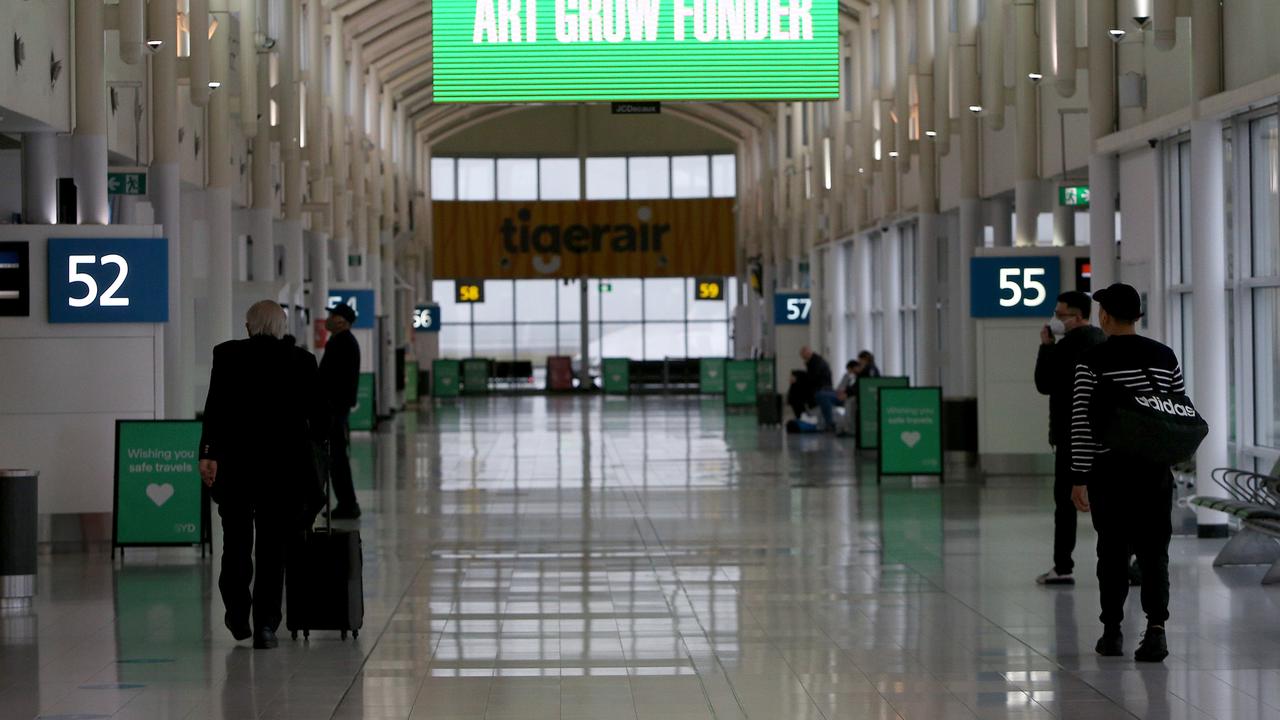CityLink toll-road profit trigger may have been fired
THE Liberals, Nationals and Greens must combine in the state Upper House to chase after the $8 billion of your money that Premier Daniel Andrews and Treasurer Tim Pallas seem happy to give to Transurban.
Terry McCrann
Don't miss out on the headlines from Terry McCrann. Followed categories will be added to My News.
THE Liberals, Nationals and Greens must combine in the state Upper House to chase after the $8 billion of your money that Premier Daniel Andrews and Treasurer Tim Pallas seem happy to give to Transurban.
They need to commission the independent and public analysis of Transurban’s financial performance under the original Kennett government concession deed, which the government refuses to do.
TOLL DEAL TO HELP FUND WEST GATE TUNNEL WORTH $15 BILLION
VICTORIAN DRIVERS PAY $1.88M A DAY FOR CITYLINK TOLLS
As I revealed a year ago, under that deed if CityLink proved too profitable, the road would revert to state ownership 10 years early, in 2025. It could then either become toll-free — a real freeway — or the tolls would flow to the government.
On my estimates that would be close to $8 billion of future tolls that would either flow into state revenues — or, better still, say in your pockets. The bell was rung — or, tolled — by former investment banker Francis Browne, who actually worked with Transurban in 1995 when it won the concession.

His assessment is that CityLink has been so profitable there’s a very good chance that the profit trigger — and so an early end of tolls — has happened.
Transurban rejects the claim. But in doing so it has deliberately muddied the waters by adding in to the calculation the money it has spent to expand CityLink. That is totally irrelevant: the calculation of whether the early termination has been triggered relates only to the original investment and the revenues that original investment has generated.
Incredibly, the Andrews Government has “bought” the Transurban spin. More incredibly, the government has moved to extend the tolling, on all of Transurban’s roads, to 2045.

It’s just “too easy” to get Transurban to build and pay for most of the West Gate Tunnel. If that’s done, the financial complications will bury for all time any chance of doing that core calculation on the original investment.
The non-government parties in the Upper House — to their great credit — have refused to pass the required legislation. They must now take the additional step of initiating a formal inquiry into the original contract.
THE MAGIC WORKS EVERY WHICH WAY
TWO numbers capture the magic of the Transurban business model.
In the latest half, actual traffic movements across its webs of toll roads in Melbourne, Sydney and Brisbane and its spreading presence in Washington DC only increased by a modest 1.4 per cent.
But Transurban investors will get a very handsome 8.7 per cent increase in their annual payment.
It’s that ability to “leverage up” the — relentless — increase each year in the number of cars and trucks using its network into an even bigger increase in toll revenue; and then to further “leverage up” that revenue increase into a yet even bigger increase in the bottom line profit and so the distribution to security holders.
This has made Transurban the ultimate “leveraged” utility business, with not just guaranteed income streams but guaranteed growth, for so long as man walks the earth and cars and trucks remain the go-to form of transport.
The real juice is the way Transurban — especially under now long-time CEO Scott Charlton — has made itself the go-to builder of new toll roads and “fill-in” linkages between existing — usually, Transurban — toll roads.
It’s just “too easy” for state governments — of both persuasions.
We need a new — what, increasingly quaintly used to be called a — “freeway” (meaning, originally, no traffic lights); almost inevitably the “answer”, in Melbourne, Sydney and Brisbane, is Transurban.

The allure is obvious: get the private sector to do it and the government doesn’t have to go to the trouble of borrowing the money and having to manage a major construction project.
The virtual inevitability of Transurban flows from two things. It’s “easy” — and, on the surface cheaper — to “pay for” the new road by extending Transurban’s toll franchise; as is happening with the West Gate tunnel in Melbourne.
This means Transurban can spread the cost across all its toll roads, whereas a new operator would have to get all its build cost back from just the one road.
And further, obviously, it wouldn’t get a cent until the road was actually built and operating.
The second overwhelming advantage Transurban has is that the new road will pour more traffic into its existing network and so, increase its revenue — which is almost pure profit — with the added leverage of those tolls rising relentlessly every year.
While a new toll road operator would get a traffic boost in return, it would still have to make all its money just on that road.
Transurban’s other advantage is that every increase in the capacity and so the usage of the actual freeways — indeed, even just of public arterial roads generally — will eventually feed traffic into its toll roads and lush revenues into its profit.
Then there’s the “free gift” of massive population growth — driving both cars and trucks on to Transurban’s toll roads; with the biggest population growth taking place in the two cities where Transurban is dominant: Melbourne and Sydney.
Interestingly, the Transurban “model” works very differently in the two cities. Look at the map. In Sydney the Transurban roads are like a “bear hug”, right around the city.
In Melbourne it’s a “choke hold” on the all-critical cross-city tunnels at the centre, with all “free” roads feeding traffic into that central toll web.



